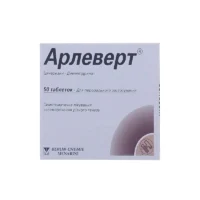Description
Zoloft (Sertraline) Coated Tablets 50 mg. №28
Ingredients:
- Each coated tablet contains 50 mg of sertraline hydrochloride as the active ingredient.
Dosage:
- The usual recommended dosage is one 50 mg tablet daily, taken with or without food.
Indications:
- Zoloft tablets are indicated for the treatment of major depressive disorder, obsessive-compulsive disorder, panic disorder, post-traumatic stress disorder, social anxiety disorder, and premenstrual dysphoric disorder.
Contraindications:
- Do not use Zoloft if you are taking monoamine oxidase inhibitors (MAOIs) or pimozide.
Directions:
- Follow the dosage instructions provided by your healthcare provider. Swallow the tablet whole with water. Do not crush or chew the tablet.
Scientific Evidence:
Studies have shown that sertraline, the active ingredient in Zoloft, is effective in treating a range of mood and anxiety disorders. A meta-analysis published in the Journal of Clinical Psychiatry concluded that sertraline is significantly more effective than a placebo in the treatment of major depressive disorder.
Additional Information:
- Zoloft works by increasing the levels of serotonin, a neurotransmitter in the brain that regulates mood, in the synaptic cleft. This action helps alleviate symptoms of depression and anxiety disorders. Clinical trials have demonstrated the safety and efficacy of Zoloft in improving symptoms and enhancing the quality of life in patients with these conditions.
- Compared to other selective serotonin reuptake inhibitors (SSRIs), Zoloft has been found to have similar efficacy but may offer a more favorable side effect profile for some individuals. It is important to consult with a healthcare provider to determine the most suitable treatment option based on individual needs and medical history.





